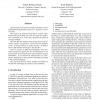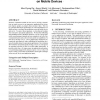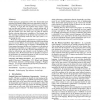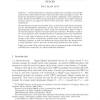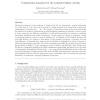10048 search results - page 134 / 2010 » The Structure and Performance of Interpreters |
PDP
2003
IEEE
14 years 2 months ago
2003
IEEE
File I/O data is interpreted by high performance parallel/distributed applications mostly as a sequence of arbitrary bits. This leads to the situation where data is ’volatile’...
MOBISYS
2011
ACM
13 years 5 days ago
2011
ACM
Resource constrained mobile devices need to leverage computation on nearby servers to run responsive applications that recognize objects, people, or gestures from real-time video....
POPL
2012
ACM
12 years 4 months ago
2012
ACM
Gradual typing lets programmers evolve their dynamically typed programs by gradually adding explicit type annotations, which confer benefits like improved performance and fewer r...
ENTCS
2002
13 years 9 months ago
2002
Call-by-push-value is a "semantic machine code", providing a set of simple primitives from which both the call-by-value and call-by-name paradigms are built. We present i...
IANDC
2010
13 years 7 months ago
2010
Categorial grammars in the tradition of Lambek [18, 19] are asymmetric: sequent statements are of the form Γ ⇒ A, where the succedent is a single formula A, the antecedent a st...
